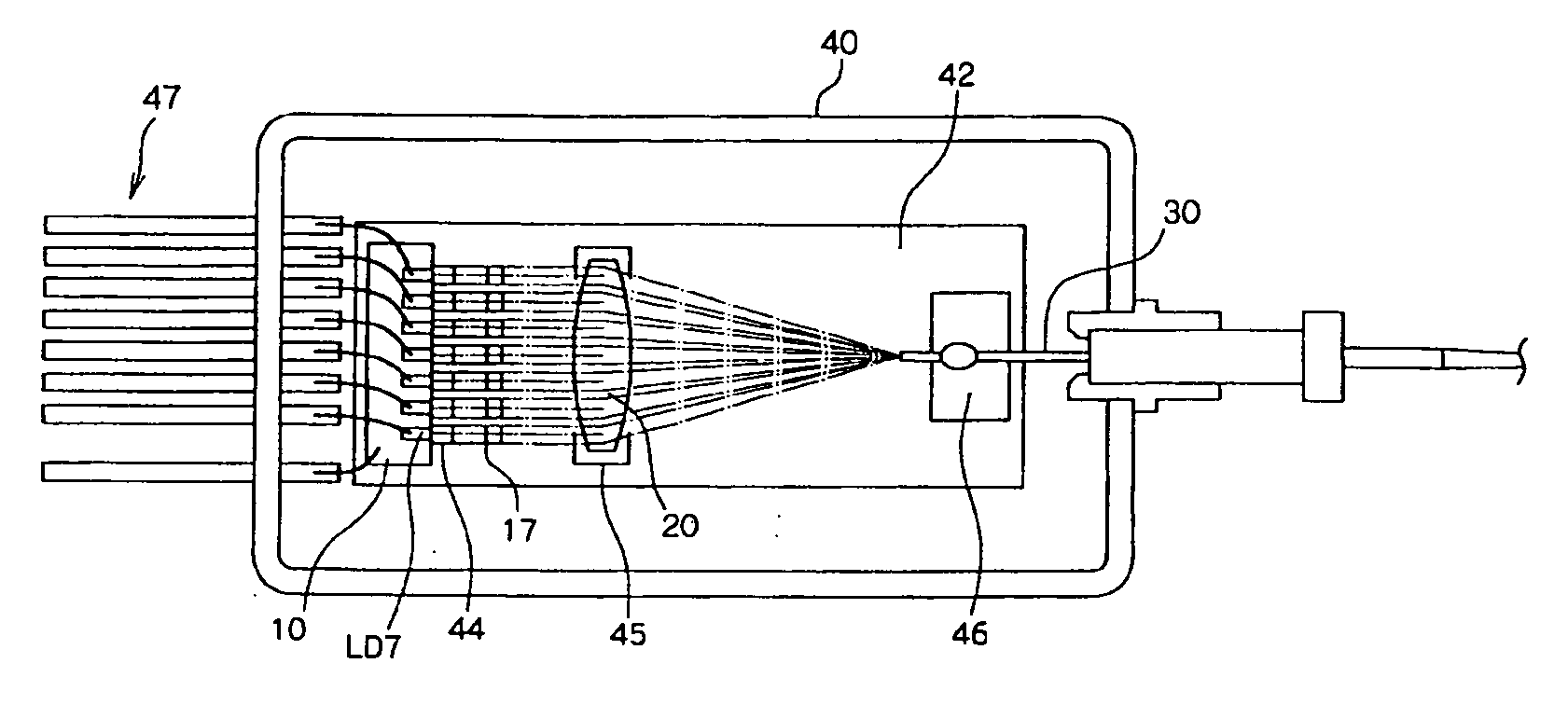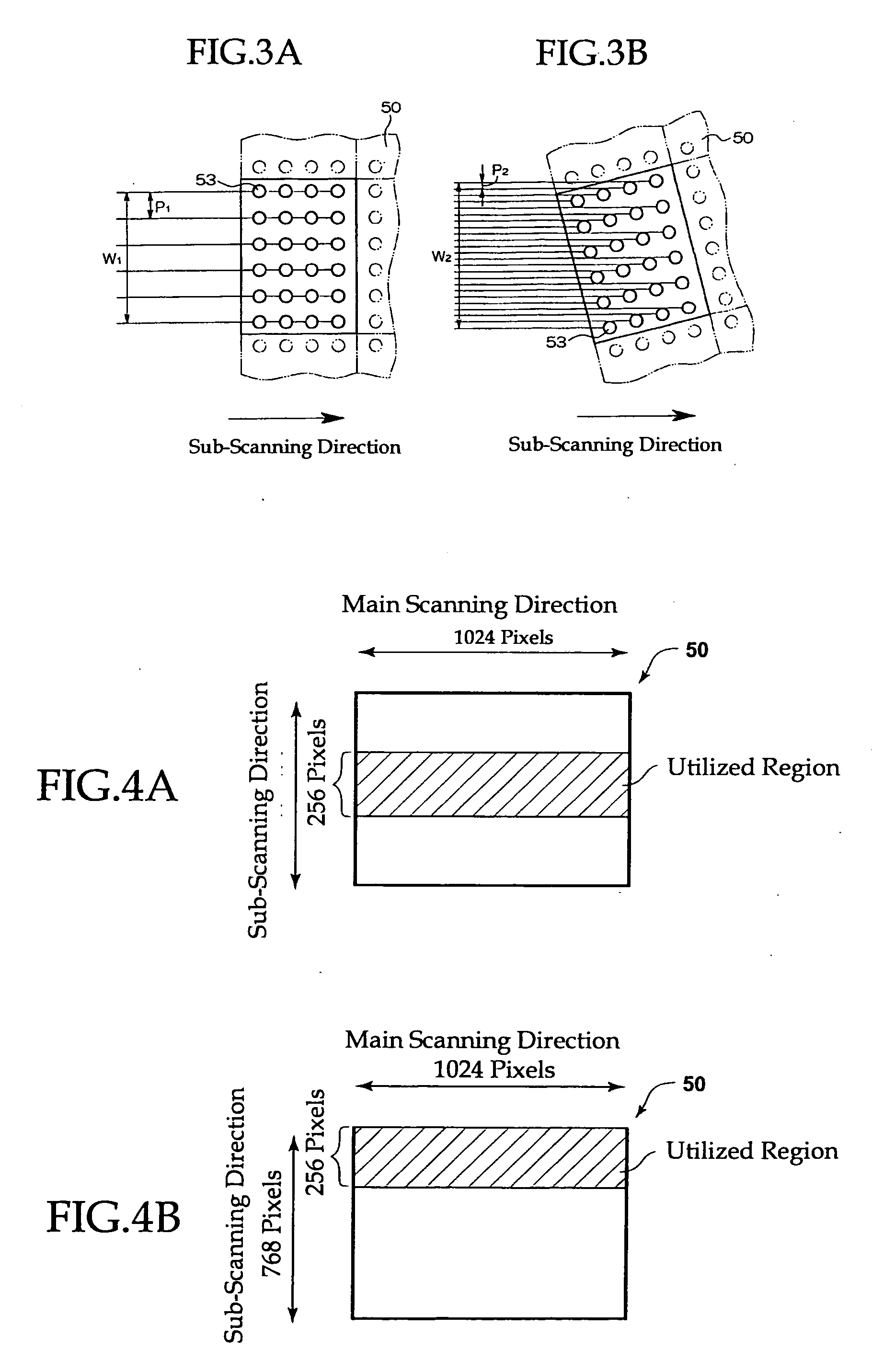Pattern Forming Process
a pattern and forming technology, applied in the field of pattern forming process, can solve the problems of deformation of the tent layer protecting the hole portion, deformation of the clear pixels, and deformation of the image formed on the pattern forming material, and achieve the effect of fine and efficient forming, reducing image distortion, and reducing the distortion of the imag
- Summary
- Abstract
- Description
- Claims
- Application Information
AI Technical Summary
Benefits of technology
Problems solved by technology
Method used
Image
Examples
example 1
Production of Laminate
—Production of Pattern Forming Material—
[0571]A photosensitive resin composition solution composed of the following composition was applied over a surface of polyethylene terephthalate film 20 μm in thickness as the support, and the surface of the support was dried to form a photosensitive layer 15 μm in thickness, thereby the pattern forming material was produced.
Methylmethacrylate / 2-ethylhexyl acrylate / benzyl methacrylate / methacrylic acid copolymer (composition15 parts by massof copolymer (mass ratio)): 50 / 20 / 7 / 23; mass average molecular mass: 90,000; and acid value 150)Polymerizable monomer represented by the following Structural Formula (73)7.0 parts by massAdduct of ½ molar ratio of hexamethylene diisocyanate and tetraethylene oxide monomethacrylate7.0 parts by massN-methylacridone0.11 parts by mass2,2-bis(o-chlorophenyl)-4,4′,5,5′-tetraphenylbiimidazole2.17 parts by mass2-mercaptobenzimidazole0.23 parts by massmalachite green oxalate0.02 parts by massleuk...
example 2
[0603]A pattern forming material was produced in the same manner as in Example 1 except that a hexamethylene diisocyanate and tetraethyleneoxide mono-methacrylate adduct at a molar ratio of 1 / 2 of the photosensitive resin composition solution was changed to a compound represented by the following Structural Formula (74). The shortest developing time was 10 seconds, and the light energy amount required to harden the photosensitive layer was 3 mJ / cm2. The compound represented by the Structural Formula (74) is an example of the compound represented by the Structural Formula (24).
A pattern similar to the pattern in Example 1 was formed on the pattern forming material, and the laminate with the pattern formed thereon was evaluated as to resolution, exposing speed, and etching property. Table 3 shows the results. Further, a printed wiring board was produced in the same manner as in Example 1, a pattern was formed by increasing the energy amount of light applied to the through hole portion...
example 3
[0604]A pattern forming material was produced in the same manner as in Example 1 except that a hexamethylene diisocyanate and tetraethyleneoxide mono-methacrylate adduct at a molar ratio of 1 / 2 of the photosensitive resin composition solution was changed to a compound represented by the following Structural Formula (75). The shortest developing time was 10 seconds, and the light energy amount required to harden the photosensitive layer was 3 mJ / cm2. The compound represented by the Structural Formula (75) is an example of the compound represented by the Structural Formula (22).
[0605]A pattern similar to the pattern in Example 1 was formed on the pattern forming material, and the laminate with the pattern formed thereon was evaluated as to resolution, exposing speed, and etching property. Table 3 shows the results. Further, a printed wiring board was produced in the same manner as in Example 1, a pattern was formed by increasing the energy amount of light applied to the through hole p...
PUM
 Login to View More
Login to View More Abstract
Description
Claims
Application Information
 Login to View More
Login to View More - R&D
- Intellectual Property
- Life Sciences
- Materials
- Tech Scout
- Unparalleled Data Quality
- Higher Quality Content
- 60% Fewer Hallucinations
Browse by: Latest US Patents, China's latest patents, Technical Efficacy Thesaurus, Application Domain, Technology Topic, Popular Technical Reports.
© 2025 PatSnap. All rights reserved.Legal|Privacy policy|Modern Slavery Act Transparency Statement|Sitemap|About US| Contact US: help@patsnap.com



